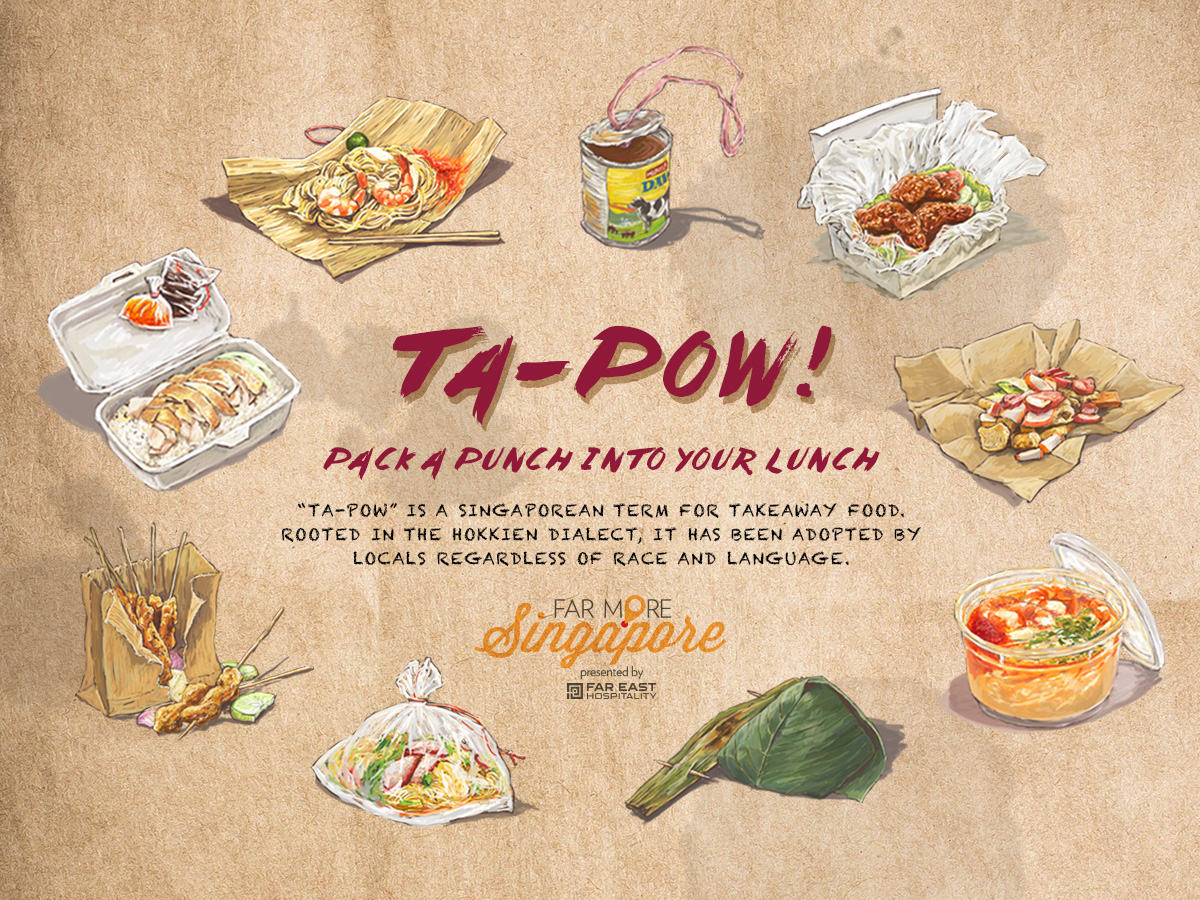9 Types of Food Takeaway Packaging Available in Singapore
Here in Singapore, we’re not only particular about the food we eat; the takeaway, or ta-pow packaging matters too. If you think we’re exaggerating, just try asking for your nasi lemak to be packed into a plastic container!

1. The Styrofoam

The next time you get several Styrofoam boxes of takeaway, look carefully at the lids. Chances are, the hawker would have carved a few symbols into them to differentiate one box from another. However, these symbols are usually indecipherable by the average person, so just open the box to see what’s inside!
What It Usually Holds: chicken rice , duck rice, economical rice, Western food
2. The White Cardboard

Fried rice too bland, or noodles too rich? Look out for green chilli or cut lime nestling under the plastic wrap. Food always tastes better seasoned!
What It Usually Holds: Zi char dishes, fried rice, noodles, crab
3. The Oil Paper

Sometimes, oil paper is used to package rice. If you find yourself chasing rice bits around the flat oily surface, simply lift the paper to guide the food onto your spoon – it’s how we locals do it!
What It Usually Holds: Wu xiang guan chang, fried noodles, roti prata , curry rice, roasted meat rice
4. The Paper Bag

Although made out of paper, the paper bag is still, to some extent, oil- and condensation-resistant. It’s also better for the environment, so if the food seller allows you to choose, remember to pick paper over plastic!
What It Usually Holds: Satay, youtiao, goreng pisang, steamed buns
5. The Opeh Leaf

When the opeh leaf comes into contact with hot food, a subtle woody fragrance is infused into the dish, enhancing flavours. That’s why in the good old days, it was used to serve anything from chwee kueh, a type of steamed rice cake served with diced preserved radish and chilli sauce, to char kway teow, a noodle dish traditionally stir fried in pork fat.
What It Usually Holds: Hokkien prawn mee, oyster omelette
6. The Banana Leaf

When heated, the banana leaf releases antioxidants and a subtle sweetness into the food it holds. If you like your food infused with a smoky flavour but dread burnt bits, this leaf is your friend. Hardy and waterproof, it allows food it carries to be cooked over direct flame without burning.
What It Usually Holds: Nasi lemak, nasi padang, otah, Nyonya kueh
7. The Red Stringed

Tied well, the red-stringed plastic bag can ferry dry and soupy foods alike. Untied, it transforms into a portable water bag for cold drinks like iced tea and homemade barley.
What It Usually Holds: Dry noodle dishes, soup, curry, chilli sauce
8. The Plastic

The most versatile of the lot, plastic containers are used to contain anything from soup, to noodles, rice, and dishes. They’re microwave safe, but if you can help it, eat the food hot instead of reheating it.
What It Usually Holds: Soup, noodles, rice, steamed dishes
9. The Kong

You’ll probably get funny looks if you use the kong, or the tin can, these days, but it used to be a very popular method to take away coffee in the 60s and 70s. Blue collar workers found them particularly useful – in places like construction sites, it is much safer to hang up a drink using the raffia string punched through the lid of the can, than to put a drink on the ground
What It Usually Holds: Milk coffee
Dining in the hustle and bustle of hawker centres can be fun, but sometimes we need a little me-time. Ta-pow the dish of your choice, and enjoy it in the quiet comfort of your room. Pick your relaxation destination here:http://www.stayfareast.com/en/hotels.aspx.






























